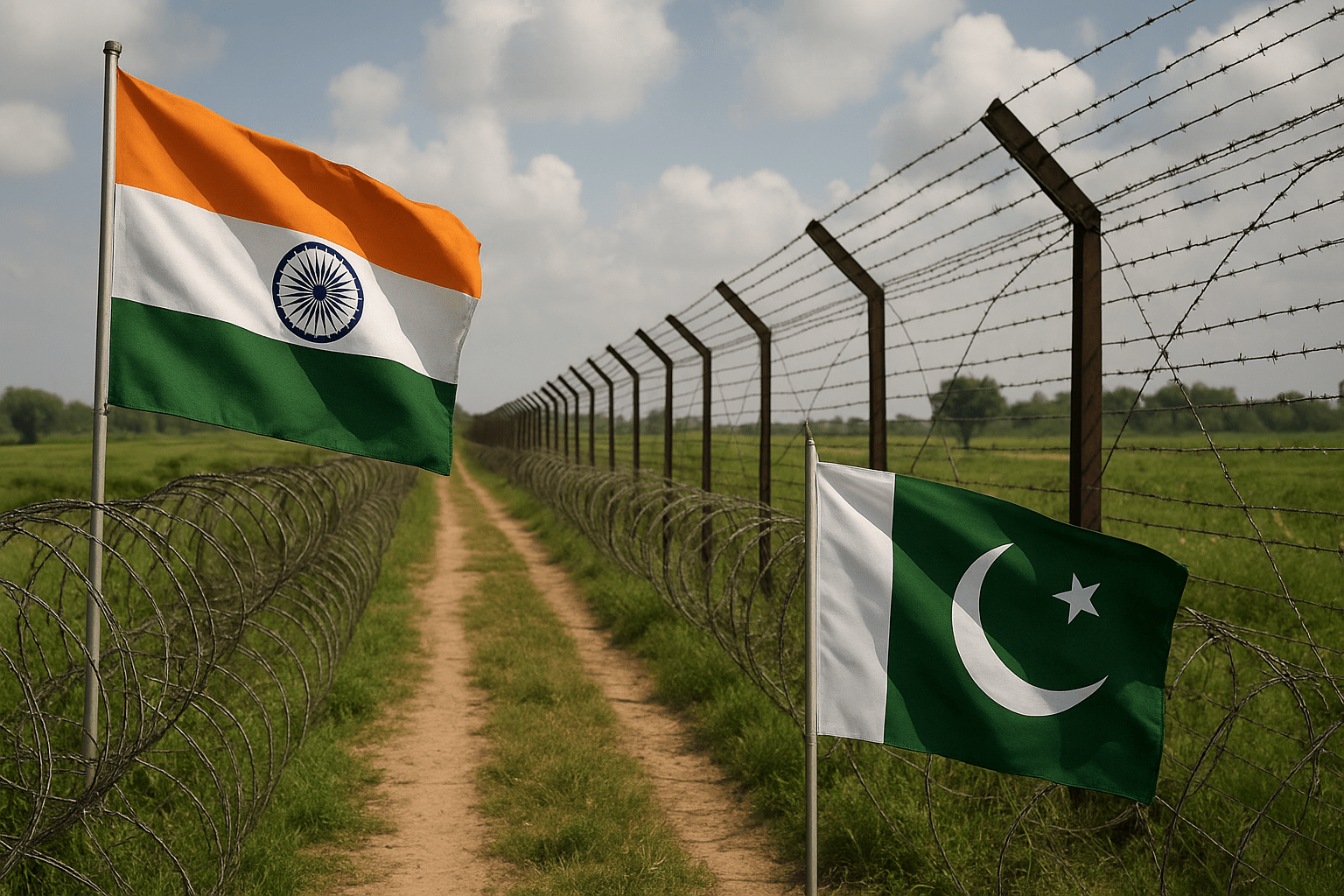The spotlight on South Asia has intensified once again, as the fragile truce between India and Pakistan continues to dominate global headlines. In this detailed piece, we break down the latest India Pakistan ceasefire updates, the political statements shaping the narrative, and what this means for future regional peace.

Rising Tensions at the Border
The story of India Pakistan tensions is not new, but the events of recent months have escalated concerns across international corridors. Both nations agreed to a ceasefire after three intense days of clashes along the Line of Control. Yet, questions remain: How long will this hold, and who truly influenced the decision?
Washington’s involvement has stirred debate. President Donald Trump repeatedly claimed that his administration played a “key role” in mediating the truce, sparking headlines around Trump India Pakistan news. However, New Delhi has firmly countered those assertions, insisting that the ceasefire was a direct result of bilateral talks between the two neighbors.
On the ground, the India Pakistan border news paints a tense picture. Residents in frontline villages remain on edge, watching troop movements closely. While the guns have fallen silent for now, locals fear that a single spark could reignite hostilities.
Modi’s Firm Stand Against Mediation
In Parliament, Prime Minister Narendra Modi struck a defiant tone. In his Modi Pakistan statement, he declared that no foreign power had pressured India to stop Operation Sindoor, the military action that preceded the ceasefire. He reminded lawmakers that only three countries spoke in Pakistan’s favor at the United Nations, signaling global backing for India’s stance against terrorism.
Modi also revealed that on the night before the ceasefire, U.S. Vice President JD Vance tried to reach him multiple times. According to Modi, when the two finally spoke, Vance warned of a possible large-scale Pakistani attack. Modi’s response was sharp and confident: India’s retaliation would be even greater. This bold statement underlined New Delhi’s determination to project strength, not submission.
External Affairs Minister S. Jaishankar reinforced Modi’s words, stressing that the ceasefire decision had nothing to do with trade promises or external mediation. His clarification directly challenged Trump’s claim that Washington had brokered peace in exchange for economic ties.
Read this – India Pakistan Water Dispute: Pakistan PM Warns India of Serious Consequences Over Indus Waters Treaty
What’s at Stake for Regional Peace?
Every round of India Pakistan ceasefire updates carries global implications. Both nations are nuclear-armed, and their rivalry has often left the world anxious about potential escalation. The recent pause in hostilities may bring a sigh of relief, but as U.S. Secretary of State Marco Rubio noted, ceasefires are fragile by nature.
Rubio, in an interview, highlighted that the only way a truce holds is if both sides agree to stop firing. He compared the South Asian situation to other global hotspots, warning that monitoring such agreements daily is necessary because of their inherent volatility.
Diplomatic observers argue that sustainable peace requires more than temporary halts in fighting. Real progress lies in structured dialogue something many hope will lead to renewed India Pakistan peace talks. Yet, mistrust runs deep, and both sides continue to blame each other for cross-border violence.
The Global Lens on South Asia
International powers continue to track every movement. Washington wants stability, not just for peace but also for economic interests in the region. Moscow, on the other hand, balances its ties with both New Delhi and Islamabad while focusing heavily on its conflict in Ukraine.
Meanwhile, for ordinary people in Kashmir and Punjab border villages, India Pakistan latest news is not just about geopolitics it’s about survival. Families are weary of displacement, soldiers stand in constant readiness, and every headline feels like a ticking clock toward either calm or conflict.
The media frenzy surrounding Trump’s claims further complicates the picture. India maintains that its actions were governed by sovereignty and autonomous decision-making, even as Trump boasts about his part in “preventing a war.” This clash of narratives reflects a broader struggle: who controls the global story about South Asia’s most volatile border?







